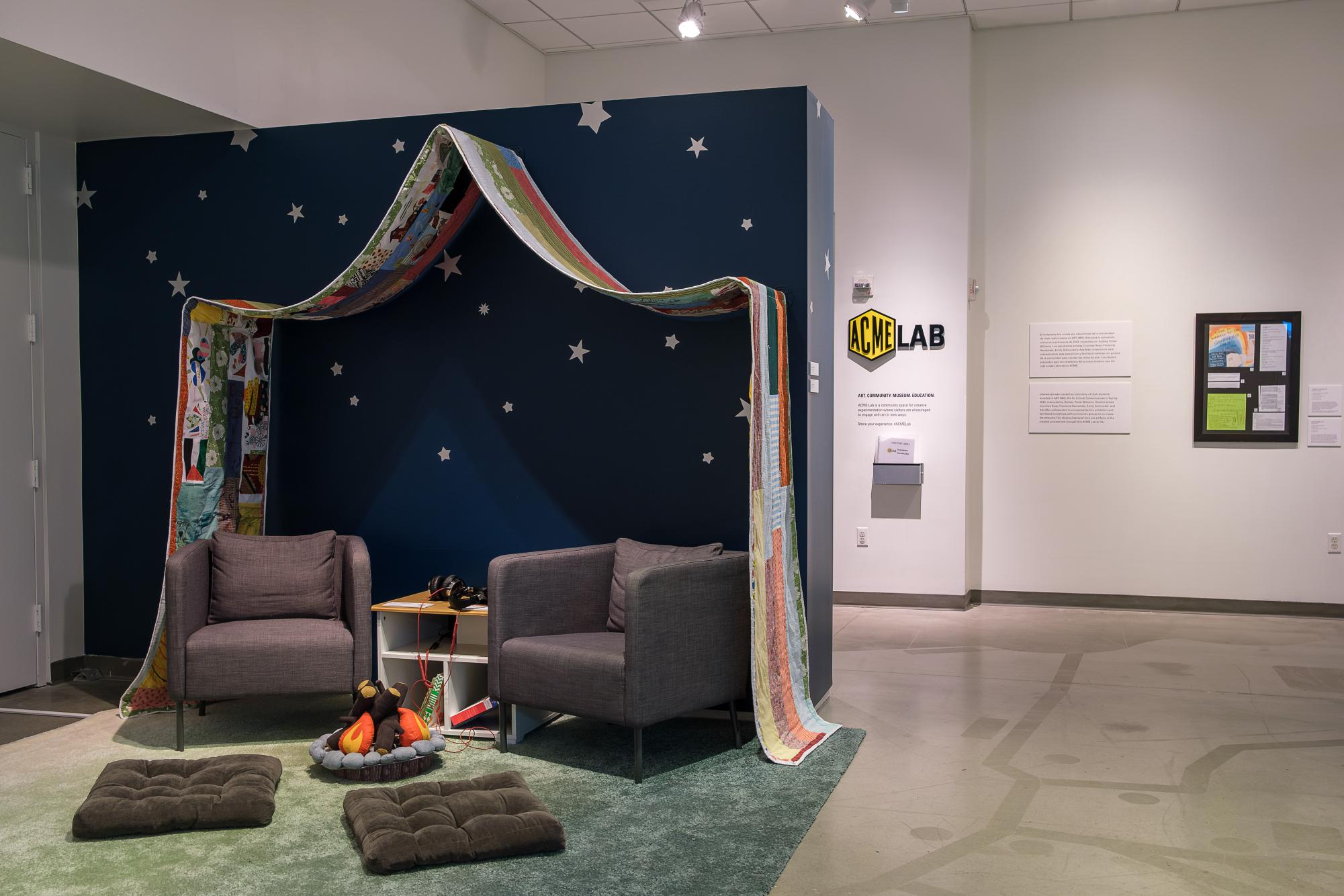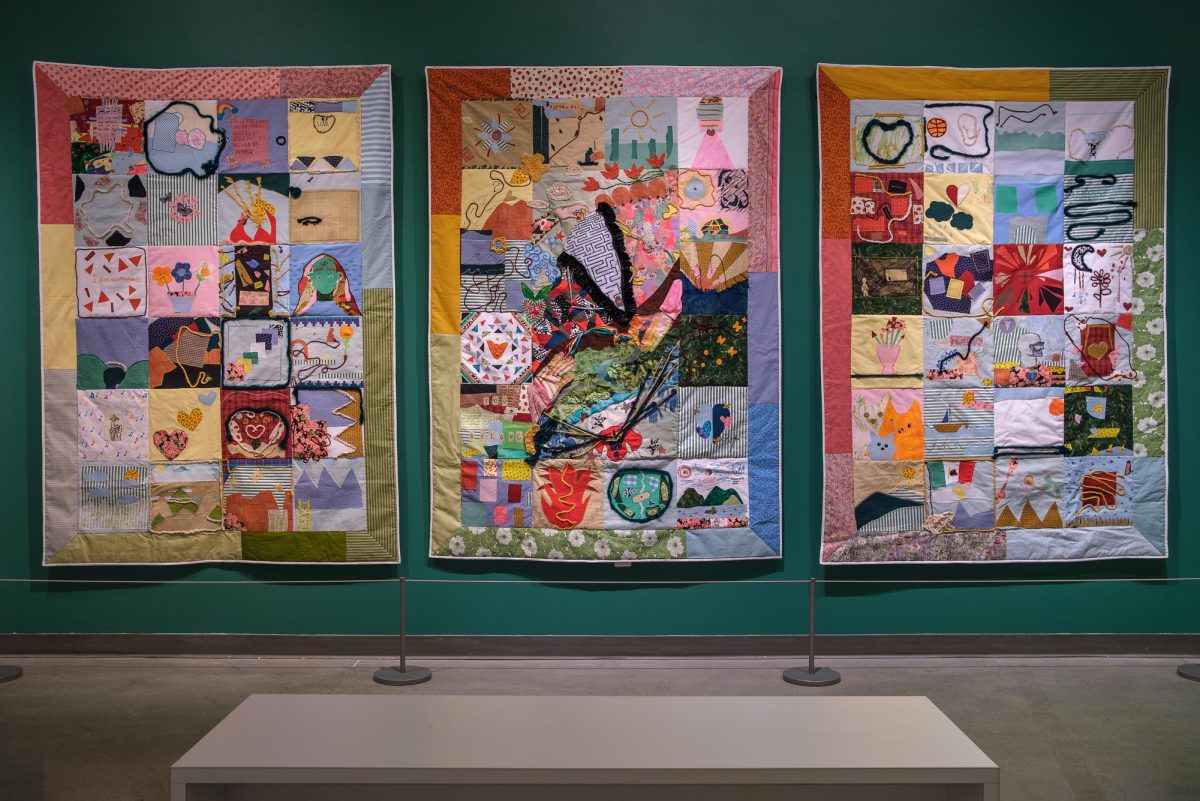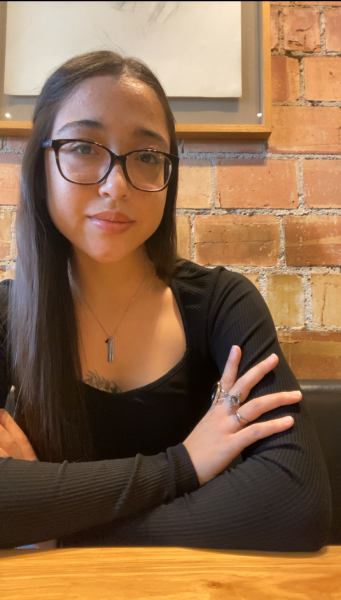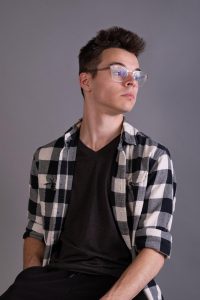“Interwoven: Social Transformation Through Art and Community” is the latest community installment in the Utah Museum of Fine Arts. Helmed by Sydney Porter Williams, this exhibit was created as a collaborative and interactive way for all members of the community to express their identity.
This Exhibit was Born Seven Years Ago
As a final project for Theresa Martinez’s class, “Inequality through Music and Film,” which she took during her undergraduate studies, Williams created an outline of a curriculum studying social theory through visual arts. Years of further development and fine-tuning turned into the creation of the curriculum for Williams’ class “Art for Critical Consciousness,” which she taught at the university last spring. The community-based final project for that class turned into the co-creation of this exhibit for the UMFA Art. Community. Museum. Education Lab (ACME Lab).
Original ideas for the exhibit involved a huge Velcro mural for viewers to move pieces around, footprints laid out through the gallery floor for those to dance on, and letters to the community, before they landed on the idea of a quilt to conceptualize intersectionality in visual art form.
Over 100 People Contributed to This Exhibit
It started in the classroom with Williams and the students creating asset maps for their identities and communities. Finding common themes and connections throughout their maps, they shared and learned from each other’s lived experiences.
Learning from each other’s lived experiences was central to the collaboration, and played into Paulo Freire’s concept of co-intentional education.
“It’s this idea that it’s not the teacher pouring into the student’s cups, it’s that everybody comes to the classroom with their own knowledge and we’re pouring into each other’s cups,” Williams said.
They then opened it up, visiting different community centers and events to connect with and further learn about how it intersects and connects us all.
“One of the things I’m most proud about this work is how collaborative it is,” Williams said.

The Personal is Political
The creation of this exhibit took on educational, personal, therapeutic and — with the effects of H. B. 261 — political aspects. Community resource centers that the creators worked with have since shut down, and there was concern surrounding what they would and would not be allowed to say in the text panels of the exhibit.
Despite the frustrating challenges this produced, the creators were still able to get their intentions across.
“We were trying to make it an approachable way to hear people’s stories, and to create a sense of vulnerability in this space, because I think once people can open up and connect with others personally, then they’re more likely to have conversations about policies and things that are affecting them,” Williams said.
“For me, the exhibit represents that my community can be acknowledged in such an important institution and that my culture also matters,” said Florencia Hernandez, one of the co-creators of the exhibit. She wanted to “extend the knowledge that no matter your race, skin color, religion, culture or roots your ideas, voice and personality matter.”
Williams’ own piece, titled “The Collectively Emerging,” reflected her personal connection to teaching the class. She was inspired by Ta-Nehisi Coates’ idea of people living more privileged lives waking up from the dream, “emerging from it, pulling each other out of it and helping each other learn and grow.”
Inclusive in Every Aspect
This exhibit incorporates almost every avenue of art. The students connected to members of the community by workshopping with them and creating poems to express their identities and critical consciousness. They then spent time painting, drawing and arranging fabrics on quilt panels to reflect the imagery of their poems. The panels were given their own piece of special embroidery by Williams, and then sewn together to create the three interwoven quilts hanging in the museum.
All of the poems are displayed in Community Art Quilt Guide books next to the quilts, but some were recorded by the students, then cut and arranged to form a collective poem that viewers can experience in the listening tent of the exhibit.
The use of fabric and collage was intentional, for it’s a very approachable art form. The beauty of this exhibit is that most of the contributors are not formally trained artists, but the expression comes across very clearly.
“It reflects each person’s style and ideas, which highlight humanity and art at the same time,” Hernandez said.
The original idea of a viewer-interactive mural did make its way into the exhibit in the form of a felt-paneled wall with hundreds of felt cut-outs for viewers to move and arrange however they feel, adding to other’s creations to involve the viewer in the community project.
The exhibit all comes together with a guest-interactive education corner and action column, inspired by Paulo Freire’s concepts of praxis and critical consciousness (conscientização). These concepts are the idea of becoming aware of inequitable social structures through learning from the community. The action column is putting into practice people’s agency to change inequitable social structures in their communities.
The exhibit will be on display through June 2025, but it will live on through the solutions listed by the community on the action column. It will also live on through Courtney Buss, who was awarded a research grant to write about the exhibit. She also plans on submitting the article to the National Art Education Association for others to experience.




